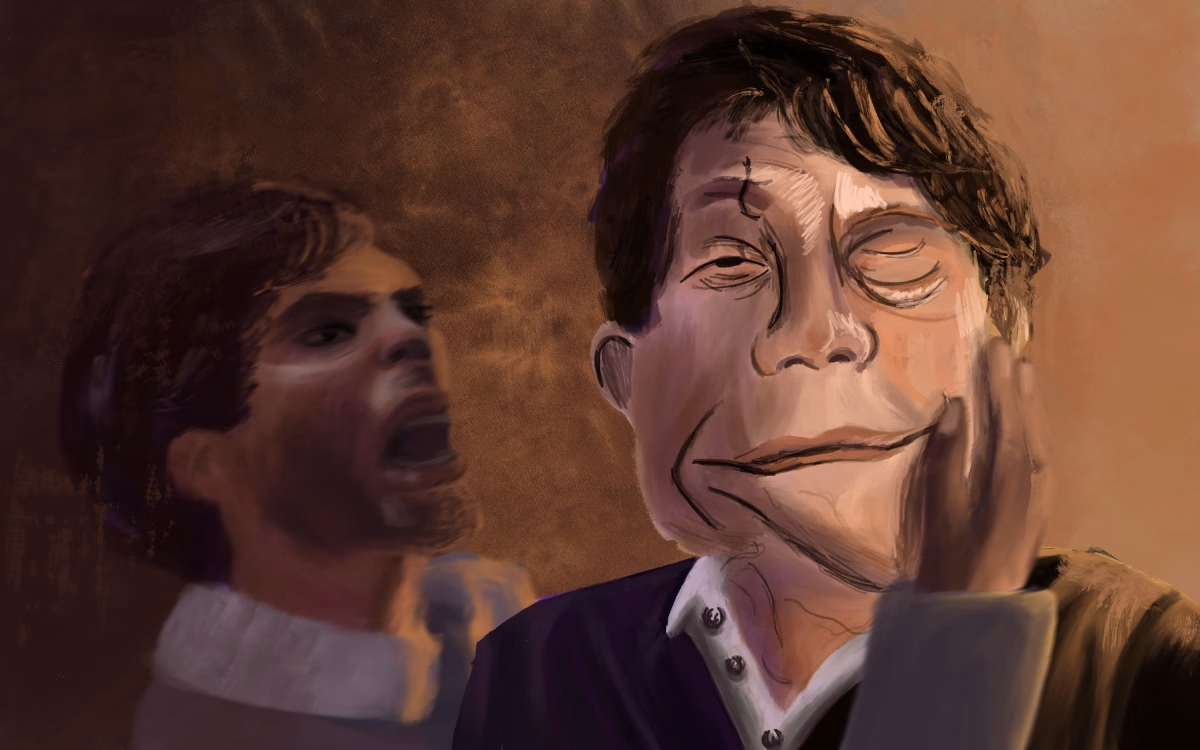Aaron Schimberg’s “A Different Man” is about its own creation. Around halfway through the film, the character of Ingrid Vold (Renate Reinsve) discusses the ethics of casting her theater production about someone with a disability.
“It’s a tricky situation,” Vold says. “If you have someone in mind when it was written, do you cast someone with the same kind of affliction? If you can’t find that person, do you cast anyone with a disability? In that case, does it not generalize the individual experiences of those with facial deformities? At what point does that representation become exploitation?”
Schimberg’s third feature explores the morality of its own existence in a way which never feels like an outright commentary. “A Different Man” is a different kind of beast, one in which the real issues of stigmatization and loneliness are put into a mirror. It reflects what society thinks about people with disabilities while also giving its marginalized characters agency in their own lives.
The film focuses on actor Edward Lemuel (Sebastian Stan), a man with a debilitating facial deformity. Not only can he hardly see or use his mouth, his appearance has rendered him incapable of making any real social connections aside from his kind playwright neighbor Ingrid Vold. When he goes through a procedure which changes his appearance entirely, he abandons his life as Edward and becomes ‘Guy Moratz,’ a stocky and confident real estate agent. But when Ingrid decides to write a play about her experiences with Edward, Guy must return in order to perform his life — only written by someone else.
With a droning opening credit sequence reminiscent of the retrofuturist technology in Ken Russels’ “Altered States,” Schimberg masterfully conducts an audience’s attention towards the minutiae of Stan’s performance.
For most of the first act, Stan is in prosthetics with his face obscured. As a result, his physicality lends itself to the simultaneously awkward yet sympathetic mannerisms of a man who never learned to be comfortable with another person. It’s “The Elephant Man” in a modern, meaner context. His interaction with every other character is charged with a palpable anxiety delivered purely through his stilted body language and mumbled dialogue.
Halfway through the film, Schimberg introduces us to the breakout star of the film: Oswald (Adam Pearson). As an actor with an actual facial deformity (you may remember him from Jonathan Glazer’s “Under The Skin”), Pearson plays the inverse of what Stan’s character internalizes – he’s taught himself to be comfortable with others.
Oswald’s involvement in the film disrupts the sympathy the audience holds for Guy, a trickly narrative shift which reframes the way the audience perceives how much his former disfigurement was affecting his life. Pearson’s infectious bubbliness and natural charisma contrasts against Stan’s mopey stoicism, and lends itself to a tense second act as things begin to unravel for Guy.
As the film reveals itself further, there arise a few minor problems. The pacing of certain scenes can drag a touch, and the epilogue (of sorts) feels like a bold choice that zips by too fast for the audience to grasp onto. Massive time jumps occur in short periods and it feels as if Schimberg is rushing to the ending when most would gladly see it take its time a little more.
Regardless of those issues, “A Different Man” flying under the radar feels like a shame. Despite not receiving its dues now, the film feels destined to become a cult classic. It’s not just Umberto Smerilli’s operatic score, Pearson’s electric performance or Stan’s turn into more interesting fare than whatever he’s being contractually obligated to do as the Winter Soldier that give the film this power. It’s Schimberg’s ability to humanize a group of people that are so commonly either demonized or victimized.
Related Stories
Support Student Journalism!
The DePaulia is DePaul University’s award-winning, editorially independent student newspaper. Since 1923, student journalists have produced high-quality, on-the-ground reporting that informs our campus and city.
We rely on reader support to keep doing what we do. Donations are tax deductible through DePaul's giving page.


